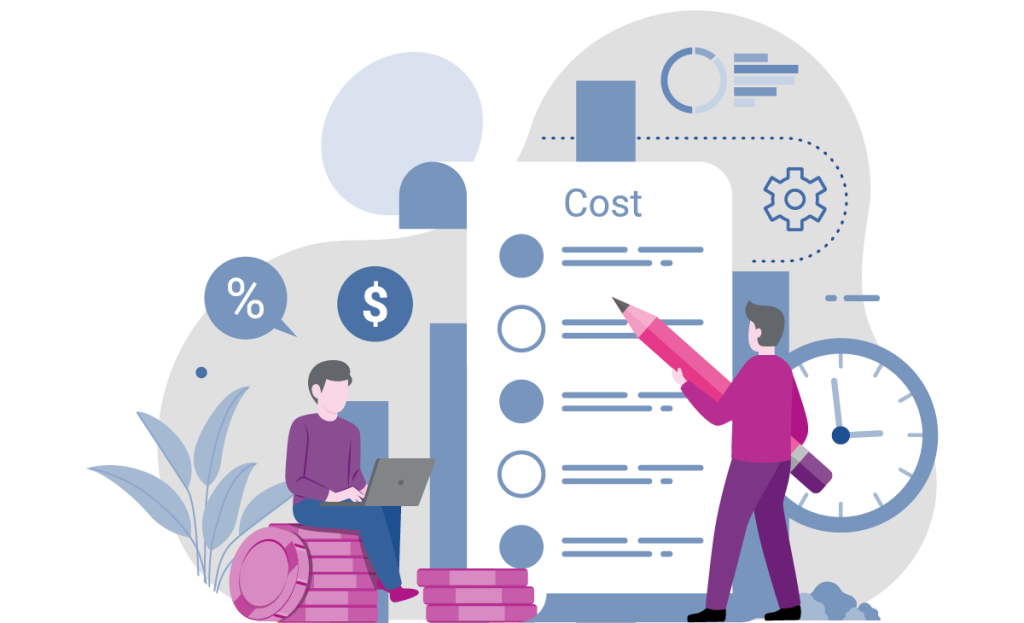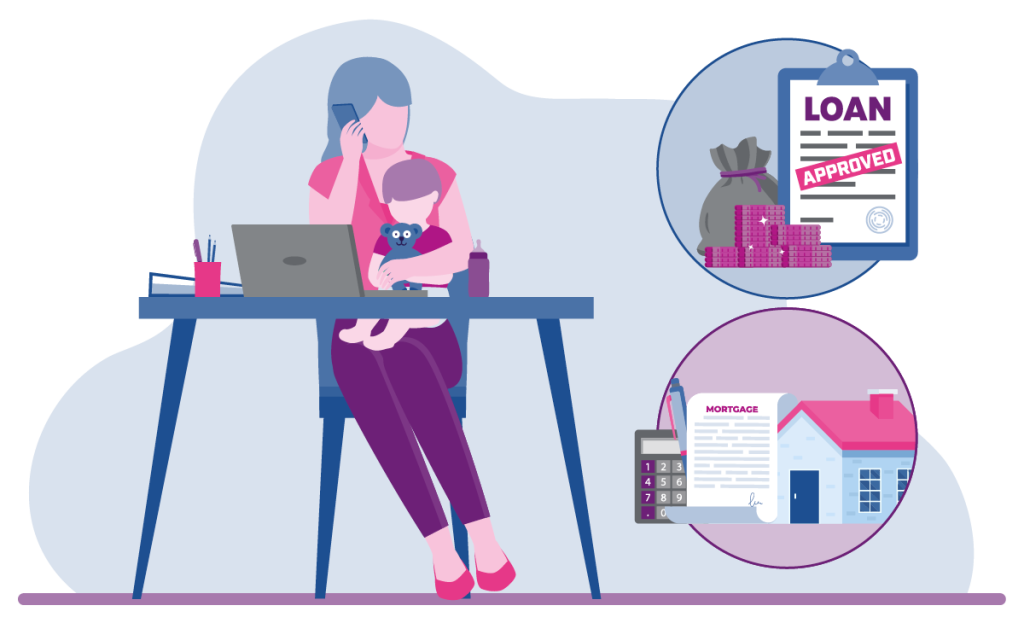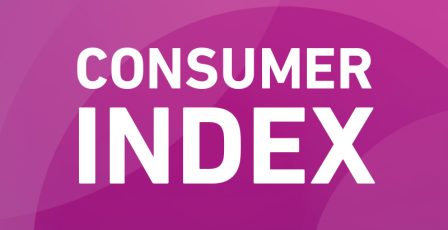Why does affordability, vulnerability, and responsible lending matter?
Affordability, vulnerability, and responsible lending are crucial as millions face financial challenges, rising debt, and increased susceptibility to fraud. By focusing on affordability assessments and adhering to regulations, lenders can protect at-risk customers, build trust, and promote long-term financial stability.
After a period of financial turbulence here in the UK, we seem to be entering a period of consumer confidence. Bank of England Base rates have reduced, inflation stabilised, and wages are on the up. Together, this has led to a rising number of mortgage applications and new borrowing, as well as credit card lending – which has grown 15% year-on-year alone.
However, this increased appetite to use credit opens up a new challenge for lenders. Our data also shows that 13% of the UK population could be considered borrowers in financial difficulty (BiFD). Understanding this current landscape and its risks is particularly important at a time when the Financial Conduct Authority (FCA) is tightening the rules and guidance on how lenders should responsibly and proactively support consumers from financial distress.

Understanding affordability and identifying financial vulnerability
The term ‘affordability’ is used everywhere but what exactly does it mean? How do you decide what ‘good’ affordability looks like, and how do you identify those who need help managing their affordability?
What is affordability?
Within the UK financial services sector, affordability is a consumer’s capacity to manage loan or credit repayments, along with their essential living costs, without finding themselves facing financial distress. To lend responsibly, a lender needs to look at whether a consumer could cover all of their current daily expenditure plus the new additional credit repayments, without it having any negative impact on their lifestyle.
Put simply, affordability looks at whether borrowers can realistically afford their repayments and not bite off more than they can chew, so to speak. It is vital due diligence to undertake before accepting an application for any new lending.
To understand a consumer’s current financial situation there are lots of elements a lender must consider, including:
- salary
- mortgage or rent
- utility bills
- lending and repayment history
- employment history
- existing financial commitments, such as personal loans and credit cards
- essential living costs, such as groceries and travel
- childcare commitments.
If a consumer can pay for their current lifestyle, plus the new commitment, then they could be considered to have a good level of affordability. However, if additional repayments would put their outgoings close to or over what they have coming in then it would be irresponsible to agree to any additional lending. Doing so would likely impact their lifestyle in the long run, as they wouldn’t be able to repay the debt. In this instance, a consumer would be considered to have low affordability.
What is financial vulnerability?
Financial vulnerability is when individuals or households are at risk of not meeting their financial commitments, often because their expenditure outweighs their income. Common causes include:
- Low or no income
- Irregular earnings from self-employment or gig economy work
- Unexpected expenses
- Lack of savings to cushion financial shocks
- Reliance on credit or high-cost loans
- High debt levels
- Life changes such as job loss, illness or relationship breakdown.
Financial vulnerability isn’t always the result of individual circumstances or actions. Economic or global events, such as the cost of living crisis and rising interest rates can impact a person’s financial vulnerability.
Plus, even if a consumer has a reliable income right now, lenders should consider changes that could impact their affordability and capacity to repay credit in the future. This could include job security, children and childcare, or their capacity to withstand an income or financial shock.
This vulnerability can affect every aspect of a customer’s life and well-being. Being in a precarious financial position may lead to unsuitable or risky financial decisions, which can worsen their situation. It can also increase susceptibility to fraud and scams, such as becoming money mules or taking out credit with no intention of repayment. This makes due diligence and care from lenders essential.
Identifying vulnerable consumers
There’s no way to ever entirely predict a consumer’s level of risk, whether their situation will alter, or whether the market and economy will change.
However, we can apply rigorous checks to identify vulnerability and mitigate its impact as quickly as possible. This should be done before any new or additional lending is agreed, as well as during the lifecycle of a service or credit.
If spotted early, lenders can offer consumers easy amendments to agreements to keep repayments on track and consumers avoid undue stress. This could include providing a more suitable product at a more affordable price or extending the repayment terms.
To identify vulnerability, or signs of potential vulnerability, flags and monitoring can include:
Late or missed payments
A reduction in income
A loss of benefits
Increased gaming or childcare payments
An increase in credit card cash advantages
Using credit card for essentials like groceries
Failure to address vulnerability could be detrimental to your business growth and have legal repercussions stemming from non-compliance, as well as eroding your brand’s reputation and consumer trust. By accessing accurate, timely data and using that to make the right decisions at the right time, you can ensure you always take the best action for your business, and your consumers.
Key takeaway
Sometimes it’s clear and easy to spot the signs of a potentially vulnerable consumer, and sometimes it requires a blend of data and insights to piece together a bigger picture of financial vulnerability. Your responsible lending processes should lend themselves to both circumstances.
Responsible lending
The ongoing cost of living challenges, combined with the requirements of the Consumer Duty, make responsible lending more critical than ever. Beyond supporting your customers, responsible lending brings significant benefits to your business, including reduced bad debt volumes and fewer customers falling into arrears. This, in turn, lowers debt recovery costs and minimises the risk of regulatory penalties you might face.
What is responsible lending?
Responsible lending means to act in your consumer’s best interests and ensure they can afford any credit agreement you offer, as well as understand the terms and conditions you set. Responsible lenders must also have comprehensive and robust support processes in place should a consumer come into any financial difficulties within the lifetime of the credit agreement.
Consumer Duty: the legal obligations
The FCA’s Consumer Duty came into force in July 2023 and established a benchmark for consumer outcomes that put data in the spotlight when it came to lenders assessing consumer affordability.
The areas they consider essential to focus on are:
- verifying an individual’s income
- understanding a consumer’s essential expenditure and disposable income
- monitoring an individual’s affordability
- showing that the data and processes you’ve used are capable of recognising and preventing potential financial distress to the consumer.
Lenders are required to share up-to-date and accurate information with the UK Credit Reference Agencies on their consumers’ behaviour and ability to repay credit agreements. Here, data-sharing is essential, as the information used will help other prospective lenders make their affordability assessments.

The FCA’s responsible lending rules are clear that lenders must reasonably assess a customer’s creditworthiness, ensuring that any credit agreement is both affordable and sustainable prior to entering into the agreement. This assessment must also consider the customer’s financial well-being and whether the agreement could negatively impact their financial situation.
Key takeaway
As a lender you have a legal obligation to protect consumers from falling into the Borrowers in Financial Difficulty (BiFD) category. You should also have comprehensive support processes in place in case a consumer comes into financial difficulties during the credit agreement.
Affordability assessments: One size doesn’t fit all
As we’ve already touched upon, there are so many different sources of data and information available to measure a consumer’s affordability. Depending on the service or credit being offered, some sources may be more important than others in your assessments.
An affordability assessment shouldn’t be just a universal checklist with a binary outcome, as all consumers are different, as are lenders. This is why we believe in offering a breadth of data and insights that work with you to meet your objectives and ensure you achieve FCA regulatory requirements.
Debt-to-income ratio
One method of assessment takes the total monthly debt repayments and compares it against an consumer’s gross income.
This is called the debt-to-income (DTI) ratio, and a lower DTI would suggest a better capacity to manage any additional credit responsibilities.
Open Banking
Open Banking is another popular source of data to assist with affordability assessments, giving a real-time view of a consumer’s financial situation by showing their income and expenditure using consumer-consented Open Banking data. This method enables consumers to share their bank account information through a secure, easy-to-use consumer journey in order to show their affordability position.
Open Banking data will then be analysed and categorised for trends and insight within seconds, allowing you to make decisions based on real data rather than estimates.
This consumer-consented data is shared digitally with organisations, removing the need for consumers to supply details manually such as bank statements and payslips. It is a faster, more secure way of assessing a consumer’s affordability using a trusted source of information.
Plus, by automating the capture, categorisation, and verification of bank transactions, it saves time and resource while increasing efficiency and providing a quicker, more tailored consumer experience. In addition, the risk of fraud is further reduced using a digital bank statement, whereas a paper statement is easier to be falsified.
Stress testing
Stress testing is to make assumptions on theoretical situations to help identify whether a consumer would still be able to manage repayments if their circumstances changed. While it’s impossible to cover every scenario, a broad sense of long-term affordability can be a valuable exercise to undertake.

Payslip data
Payroll or payslip data in particular can offer great affordability insights covering:
- income
- outgoings such as pension
- car allowance
- childcare vouchers.
At Experian, we have access to the largest payroll dataset in the UK, encompassing over 16 million Pay As You Earn (PAYE) records. This allows individuals to consent to share their income and employment data with lenders seamlessly, for better affordability assessments.
Whatever method or data you choose to use, ensuring it gives a true, complete view of an individual’s current financial wellbeing, and that it’s accurate and up-to-date, is essential to lending responsibly and meeting regulations.
Implementing affordability assessments
When it comes to the volume of data you’re likely to process during affordability assessments, it’s worth considering the benefits of digitising your affordability checks. Using data-driven solutions and decision-making speeds up the time it takes to process the data, ensures accuracy and provides a robust outcome.
Implementing a digital solution can also save time and resource, and cuts the potential of human error and fraud. It also reduces the time needed to reach a decision, which can be a consumer priority if they want to access a service or credit quickly.
Generative AI tools can also be useful in your data-sourcing and organising processes, acting as an efficient, time-saving tool.
In conclusion
Affordability data is growing and changing all the time. Markets are shifting and consumer situations are continually evolving. This can be a lot to process and keep ahead of, so being able to access the most accurate real-time and emerging data is the key to successful affordability assessments and ongoing responsible lending.
Accurate and timely data can enable your business to grow and your consumers to flourish, responsibly. It can also support consumers when they need it and help them build a better future.
We can help
We help businesses identify vulnerable customers, assess affordability, and implement responsible lending practices to work towards regulatory compliance.
With extensive data on UK consumers, Experian supports lenders in making informed lending decisions, identifying growth opportunities with the right customers, and tailoring products and services to meet individual financial needs. We can help you:
- view all income streams, source of income, the amount and frequency from connected bank accounts
- view a consumer’s essential, committed, and discretionary expenditure
- identify consumer’s behavioural trends and spot signs of financial vulnerability when assessing income and expenditure across time periods
- reduce the possibility of fraud with Identity Verification and PEPS & Sanctions Screening
- verify employment details from source.
To find out how we can help accurately assess your consumers’ affordability and lend responsibly, get in touch.












